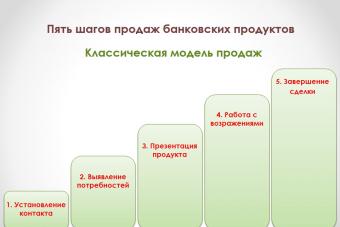Hello! About a year ago, red scabs appeared on the neck under the fur of the cat, which she combed very hard, but they periodically passed, then reappeared. A couple of months ago, the same ones appeared on the hind legs from the inside, the cat scratches and licks them all the time. We went to the vet, gave him an ointment with tar, but it didn't help. About three weeks ago we saw blood in the urine, how long ago I can’t say, because. before that, she went outside until it got colder. We turned to the veterinarian, he said that she had these scabs due to a malfunction in the liver and kidneys, but they don’t do a urine test here, but only took scrapings from the skin, they said that it was not lichen and not a tick. They give the cat injections of suprastin, some antibiotics, calcium, but there is no improvement. After the injections, the cat runs around the house, her saliva runs, she behaves very strangely, then she starts to move her hind legs badly. All this time she eats and drinks normally. What treatment is carried out in such cases, is such a reaction to injections normal? There is no other clinic here, and we are very worried about the cat, but we do not know how to help her.
Hello!
There can be many reasons for the symptoms you describe. Describe in detail the diet of the animal, indicating the ingredients included in it. When did you do routine deworming? When was the animal vaccinated and with what vaccine? What vitamin preparations do you use additionally. This is very important diagnostic information. Submit it as soon as possible.
Please note that Whiskas, Friskas, Meow, Felix and Kitiket are not recommended for cats. Neither dry nor wet. These are very harmful feeds that can sooner or later provoke gastrointestinal diseases and quite often lead to the death of the animal. Sausages, milk, soups, borscht and everything else "what we eat ourselves" is not applicable for cats. This rule is. Feed your animal either a quality commercial food: Acana, Gina, Orijen, Hills, Royal Canin, Eukanuba, Go Natural or Now Fresh. Or natural products: rice, oatmeal, buckwheat + beef, turkey, rabbit (but not in the form of minced meat) and stewed vegetables (cabbage, cauliflower, carrots, beets). The percentage of meat in the main diet is at least 70%. Also remember that you should not mix natural food and industrial food in any case. Vitamins must be used for any type of diet, for 1-1.5 months. 2 p. in year.
The animal has allergies and miliary dermatitis. Perhaps hypovitaminosis also has a significant impact on the manifestation of this kind of symptoms. Treatment must be comprehensive.
- Instead of water - a decoction of chamomile 1 teaspoon. for 1 liter of water - up to 7-10 days.
- White coal 1 tablet or Ataxil 10-20 ml. ext. 2 p. in the village - up to 12 days. in 60 min. before or after meals and giving drugs vn.
- Nux Vomica 5 caps for 1 hour. water vn. 3 p. in days - up to 7-10 days.
- Mezim 1 tab. ext. 2 p. in the village - up to 10 days.
- Emprobio 4 ml i.d. 2 p. in the village in 30 min. before meals - up to 14 days. or Hilak 5-6 cap. per 10 ml of water ext. 2 p. in days - up to 7-10 days.
- Salvikal or Vitabon up to 3 months according to the instructions
- Bathe the animal with TropiClean Oxy-Med Oatmeal Shampoo, removing all crusts, then 1 time in 1-2 months.
- Treat the affected areas with hydrogen peroxide 2-3 r. in the house until completely clean up to 14 days.
- Local treatment with Chlorhexidine 3 p. in days up to 14 days
- Locally lubricate the affected areas with Methylene blue (alcohol solution) 2 p. in the village up to 12 days.
- 20 minutes after p. No. 10, lubricate the affected areas with Clotrimazole or Ecodax 2 p. in the village up to 12 days.
- Put on a plastic veterinary collar that prevents self-injury up to 14 days.
- Suprastin 0.5 ml vm. 2 p. in the village up to 12 days.
- Lipoton 0.5 ml pc. 2 p. in the village up to 12 days.
Inform about the condition of the animal 1 time in 3-5 days.
Authors): A.N. Gerke, PhD, veterinary dermatologist, member of the European Society of Veterinary Dermatology (ESVD) / A. Gerke, DVM, PhD
Organization(s): CJSC "Network of veterinary clinics", St. Petersburg / "Network of veterinary clinics", St. Petersburg
Magazine:
№1 - 2013
Abbreviations : APTI - aspiration puncture with a thin needle; i / m - intramuscularly; s / c - subcutaneously; p / o - inside; GCS - glucocorticosteroids
Erosions and ulcers can be a manifestation of various skin diseases in cats. erosion ( erosio) - a superficial defect within the epidermis (epithelium), can be found on the skin and / or mucous membranes. Appear with mechanical irritation of the skin - as a result of scratching (excoriation) of a papular rash, with maceration of the epidermis of the skin in the area of \u200b\u200bfolds (intertrigo complex). Also, erosions are formed during the opening of vesicles, blisters and superficial pustules. Many immune-mediated diseases associated with vesiculobullous lesions go unnoticed by owners until they erode. Usually they are found in places with sparse hair (abdomen, temporal regions). Erosions usually have a bright red color, often covered with discharge or crusts. A distinctive feature of erosion is healing without scarring. Sometimes temporary pigmentation appears in their place, less often - hypopigmentation. Erosions cause a sensation of itching, sometimes even pain. Cats intensively lick the affected areas, maceration and infection lead to the development of ulcers.
ulcer ( ulcus)- a deep defect of the skin, and sometimes the subcutaneous tissue. Acute ulcers are usually shallow, usually round or oval in shape, their edges do not rise above the level of the skin or mucous membrane. The edges of a chronic ulcer are often raised, dense, sometimes callused (calls ulcer). The bottom, or base, of the ulcer is clean, bleeding or suppurating, covered or uncovered with granulations. In a number of diseases, it is covered with necrotic decaying masses. With pronounced cicatricial changes in the area of \u200b\u200bthe edges and bottom, the ulcer often acquires a peculiar star-shaped outline. Subsequently, in their place, a star-shaped scar can be found. Skin ulcers are a polyetiological disease that can occur as a result of infection (bacterial, viral, fungal), mechanical, thermal, electrical, chemical factors, ulceration of tumors.
Diagnosis of erosive-ulcerative dermatoses is carried out on the basis of a medical history, a dermatological examination, including the study of deep skin scrapings, and routine blood tests. It is impossible to neglect the collection of anamnesis when examining cats, for example, the development of skin ulcers can be caused by a direct damaging effect during thermal damage, as a result of exposure to acids, caustic alkalis, etc.
Cytological examination of scrapings and material obtained by fine needle aspiration (APTI) should be performed at the initial stage of the diagnostic examination (before the application of therapy). This allows you to get a quick result and early diagnosis of skin neoplasia, although the absence of tumor cells in the material does not exclude its presence.
It is necessary to carefully select the most "fresh" affected areas (usually at least three) that are not subject to excoriation (combing) for examination. In ulcerative dermatitis, it is preferable to find primary lesions that are a direct result of the pathological process and provide the most information. Before taking scrapings, purulent-necrotic masses are necessarily removed from the surface of the lesions with a cotton swab (gauze). The material is scraped off with a scalpel blade until capillary blood appears. Then it is evenly distributed over the glass slide and dried in air.
Methods for processing and painting smears, punctures and prints are very diverse (according to Pappenheim, azure-eosin according to Romanovsky, according to Leishman, hematoxylin-eosin, Diff-Quick fast paints and others).
In hematological blood tests of cats with erosive and ulcerative lesions, attention is paid, first of all, to the number of leukocytes and leukogram: leukopenia is observed in viral diseases (calicivirus, cat immunodeficiency, etc.), eosinophilic leukocytosis - with increased sensitivity to flea bites, atopy, eosinophilic granuloma, especially with the presence of ulcers in the oral cavity, less often food allergies, urticaria pigmentosa and mastocytomas.
Biochemical blood tests are often used to diagnose systemic disorders to exclude diabetes mellitus, kidney and liver failure. Identification of these metabolic disorders limits the doctor in the choice of drugs, which avoids complications in the treatment of sick cats. When diagnosing erosive-ulcerative skin diseases, attention is paid to the proteinogram, especially to the content of immunoglobulins - severe hypergammaglobulinemia is observed in long-term allergic diseases, for example, atopy.
Diseases that are immune
The eosinophilic granuloma complex is the most common erosive-ulcerative skin disease in cats, affecting the skin and mouth (Figure 1). Clinically manifested by ulcers, plaques, linear granulomas, miliary dermatitis (photo 4). In cytological preparations, a large number of eosinophils and histiocytes are observed (photo 3). To obtain informative material, it is necessary to carry out scrapings from the most recent lesions. In cases of infected erosions, the examination of the material reveals degenerative neutrophils, microbes, and cellular detritus. Imprint smears of superficial exudate almost always contain many bacteria and leukocytes, which indicates the colonization of opportunistic microorganisms in an ulcerated lesion.
In plasmacytic pododermatitis, cytology of aspirates obtained from eroded granulomas, located mainly on the paw pads, reveals a large number of plasma cells.
Mixed inflammatory cells represented by non-degenerative neutrophils and macrophages, the presence of a large number of acantholytic cells (rounded nucleated keratinocytes devoid of cytoplasmic processes) is characteristic of an autoimmune process (for example, pemphigus foliaceus - photo 6).
At the beginning of treatment, it is necessary to use mechanical means of protection that prevent self-injury. It can be an Elizabethan collar, light overalls, soft polymer caps for claws and other devices.
For the treatment of immune-mediated erosive-ulcerative dermatoses of cats, corticosteroids and immunosuppressants are used. Corticosteroids have a rapid anti-inflammatory, anti-edema, antipruritic effect, inhibit the release of cytokines (interleukins and interferon) from lymphocytes and macrophages, inhibit the release of inflammatory mediators by eosinophils, disrupting the metabolism of arachidonic acid and the synthesis of prostaglandins, reduce inflammatory cell infiltrates, reducing the migration of leukocytes, including . lymphocytes in the area of inflammation.
Prednisolone is prescribed p / o 1 - 2 mg / kg every 12-24 hours, this interval gradually increases to 48 - 72 hours. It is important to continue treatment for at least a week after the establishment of visible remission. If it is impossible to give tablets, prolonged injectable GCS preparations can be used: dexamethasone 1–2 mg (Dexafort, MSD Animal Health, s / c, / m at a dose of 0.3 - 0.7 ml) , methylprednisolone acetate (Depo-Medrol, PFIZER) is administered intramuscularly at a dose of 0.25 - 0.5 ml (10 - 20 mg per cat), triamcinolone (Kenalog, Polcortolon 40 - intramuscularly 0.2 - 0.5 ml per cat). After the introduction of GCS, in most cases, improvements are observed within 12 to 48 hours, and the effect persists for several days or even weeks. However, due to the risk of developing diabetes mellitus and immunosuppression, it is desirable to avoid the frequent use of prolonged injection forms. In addition to steroid drugs, antihistamines, fatty acid supplements can be used. For humans, antihistamines alone, including topical ones, are considered effective, but, in the author's experience, they are of limited value in cats, although in some cases they reduce the need for GCS.
If it is impossible to exclude the impact of the allergen and recurrence of the disease with a decrease in the dose and frequency of administration of GCS, combination therapy using cytostatics is used.
This group of drugs is used to treat cats with pemphigus and eosinophilic granulomas that are resistant to corticosteroid therapy. More commonly used chlorambucil (Leukeran) in doses of 0.1-0.2 mg/kg (2-4 mg/m 2 body surface) daily or every other day. Symptoms of damage to the gastrointestinal tract (anorexia, vomiting, diarrhea) occur less frequently when administered every other day. Myelosuppression resolves after discontinuation of the drug. The course is usually 1 - 2 months, then the dose can be reduced until the drug is discontinued. When treating animals with this group of drugs, it is recommended to monitor the clinical blood count, including platelet count, every 2 weeks.
With eosinophilic dermatitis, cyclosporine at a dose of 2.5 mg/kg/day has been successfully used. In severe cases, the dose may be increased to 5 mg/kg/day. When a positive clinical result is achieved, the dose should be gradually reduced until it is completely canceled.
Bacterial skin infections
In cats, primary bacterial skin infections are rare (with the exception of subcutaneous abscesses due to trauma) and are usually associated with immune and metabolic disorders. Predisposing factors are allergies (photo 2), hyperthyroidism, diabetes mellitus, immunosuppression (FIV, FLV, calicivirus and others). The exception is superficial pyoderma in kittens (juvenile form of impetigo) with excessive care. The main microorganism that causes pyoderma is coagulase-positive Staphylococcus pseudointermediaus, as well as Pasteurella multocida, Streptococcus sp.(hemolytic strains) , Actinomyces sp., Bacteroides sp., Fusobacterium sp.
In cytological preparations for pyoderma, there is a marked increase in the number of neutrophils, including the presence of degenerative leukocytes, some of which may contain intracellular bacteria. Eosinophils are rare. Yeast fungi may also be present Malassezia sp., especially with the intertrigo complex.
Treatment consists of eliminating the causes and antimicrobial therapy. Only topical application of drugs (chlorhexidine, miramistin, povidone-iodine and others) is effective in eliminating the causes of erosive lesions. For ulcers, there is a need for systemic antibiotic therapy: amoxicillin + clavulanate 12.5-25 mg/kg po every 12 hours, cephalexin 25 mg/kg po every 12 hours, enrofloxacin 5-10 mg/kg po every 12 hours other. In chronic cases, the material can be sent for microbiological examination (isolation of bacterial and fungal cultures and antibiotic sensitivity test).
Neoplasms
Proliferative ulcerative skin lesions in cats, especially solitary ones, should always be alert for neoplasia. Blastomatous ulcers are formed as a result of the decay of tumor tissue. Cytological signs of malignancy of neoplasms are: anisocytosis (change in cell size), pleomorphism (change in cell shape), change in the intensity of the color of the cytoplasm, anisokaryosis (change in the size of the nuclei), change in the size and shape of the nucleoli, change in the value of the nucleus / cytoplasm ratio. The most common examples of tumors leading to the formation of ulcerative skin lesions in cats are basaliomas (photo 5), squamous cell carcinoma, mastocytomas (photo 9), less often ceruminomas and tumors of the sebaceous glands, tumors of mesenchymal origin (fibrosarcomas, angiosarcomas and others). Erosions and ulcers in the abdomen, accompanied by indurations in and under the skin, are often associated with breast carcinomas (Figure 7).
Mycoses
Fungal infections rarely result in erosive and ulcerative skin lesions in cats. Candidiasis of the mucocutaneous zones is a rare cause of erosions associated with moist maceration of the skin. However, defeat Candida spp. should be considered in the differential diagnosis of eosinophilic lip ulcers in cats, as this mycosis occurs against the background of immunosuppression, incl. caused by the unreasonable use of GCS. In cytological preparations, typical budding yeast fungi are detected, while a weak leukocyte reaction is observed.
Dermatophytosis infrequently leads to the development of erosions and ulcers, however, excoriation, especially in kittens, can be manifested by erosions in the head area (photo 8). The rarest cases of pseudomycetoma in the region of the trunk and base of the tail in Persians also appear as ulcerated nodules on the skin.
Treatment is carried out in a complex, combining the local use of drugs (for example, povidone-iodine) and the elimination of the causes of mycosis. In the absence of improvement and / or generalization of lesions, systemic antimycotic therapy is used (itraconazole p / o 10-20 mg / kg every 24-48 hours, ketoconazole 5-10 mg / kg every 12-24 hours).
Scabies of cats
Notoedrosis, or pruritic scabies, is characterized by itching, poorly controlled by corticosteroids, papules and crusts. Erosion may occur due to excoriation and self-licking. The diagnosis is based on the detection of ticks in scrapings. An improvement in the cat's condition is observed after treatment with acaricides (topically amitrazine, ivermectins, selamectin, etc.). Duration of treatment - at least four weeks, the first 7 - 10 days may use corticosteroids to reduce itching.
In conclusion, we can say that the factors that cause the formation of erosions and ulcers on the skin in cats are extremely diverse. Often their appearance is due to the combined influence of both general and local factors. An example of such ulcers is pyoderma against the background of allergic eosinophilic syndrome. Therefore, the effectiveness of treatment directly depends on the correct diagnosis.









If a cat has sores on its neck, it means that the animal is not properly cared for or it is susceptible to one of the diseases that are acquired or inherited. Such diseases can be both harmless enough and pose a danger to humans. With the timely diagnosis of the problem and the beginning of the fight against it, sores on the cat's neck can be effectively treated. In case of hair loss, a number of measures are taken to eliminate the source of a possible infection, lack of vitamins, or an allergic reaction.
Show all
Causes of hair loss
The appearance of sores on the neck of a cat is most often accompanied by increased hair loss and constant combing of the affected skin area. In this case, it is important for the owner to know the symptoms of the underlying diseases that can affect the pet's skin.
The most common causes of hair loss in cats are:
Sores can be the result of improper care of the animal. Poor-quality feeding, lack of physical activity, the use of low-quality cosmetics lead to the fact that the pet's hair falls out.

Bad heredity and age problems
If the disease has arisen due to a hereditary factor, then it is not possible to cure the pet. The only thing the owner can do is to keep the pet's health at an appropriate level to reduce the likelihood of an aggravation of the condition. Acquired diseases are usually temporary. With timely treatment, they are easy to eliminate.
In old age, all processes in the body of animals slow down. The organs of adult pets work in a less active mode, therefore they are susceptible to various kinds of infections. Sores and hair loss can be a symptom of the development of senile diseases.

Other diseases
Hair loss and skin disturbances are often caused by irritants present. It could be a fungal infection. At the same time, small bald spots appear on the body of the cat. They may indicate the presence of ringworm or mycosis. If you suspect the appearance of these diseases, an urgent consultation with a specialist is necessary, since fungal infections are dangerous not only for the cat, but also for humans. The veterinarian will conduct the necessary research and, upon confirmation of the diagnosis, prescribe a comprehensive course of treatment.
Seborrhea - hereditary and secondary - causes not only sores, but also an unpleasant odor. The animal's skin becomes oily and inflamed. It is possible to accurately establish the disease only after conducting special tests (blood test and skin scraping).
Another cause of hair loss can be a serious infection - demodicosis. The disease is generalized and localized. The first form appears only in cats with a weak immune system. They have significant reddening of the skin, sores form and hair falls out. Periodically, cats suffer from itching.
Another disease that provokes hair loss is erythema. Pathology is a complication of oncological diseases, and can also appear as a result of taking certain medications or as a result of an infection. Signs of this disease include the appearance of frequent watery blisters in the armpits, groin and around the mouth. It happens that fever, depression or ulcers are observed. For cats, this disease is quite rare.
Adenitis in cats is also rare, but is accompanied by plaque formation. They appear on the neck, ears, head in the form of rounded areas that are covered with crusts. In the treatment of this disease, medicated shampoos are used. In severe cases, steroids and retinoids are used.
Dermatosis in cats manifests itself in the form of sores with hair loss that occur as a reaction to sunlight. The disease is characterized by a bright reddening of the skin. The disease is treated, but only in a veterinary clinic.


Diagnostics
To diagnose diseases that provoke the appearance of sores and hair loss in cats, it is recommended to conduct the following studies:
With the help of a comprehensive study, the specialist establishes the true cause of the disease. The method of future treatment and the rate of recovery of the animal directly depend on the accuracy of the diagnosis.
Various dermatological diseases are not uncommon in all domesticated felines. Most often, scabs in a cat appear against the background of a significant decrease in immunity and chronic diseases.
The development of flea dermatitis is accompanied by severe itching, so the cat can comb the damaged areas, exacerbating the situation. As part of the treatment, fleas should be eliminated first. For this purpose, you can use special drops that must be applied to the withers of the animal. To relieve an allergic reaction, Execan is administered ½ cube 1 time per day. In addition, you can use ointments and creams, which include antihistamines.
Another common disease that provokes the appearance of characteristic crusts on the skin of a cat is folliculitis. In this disease, inflammation develops against the background of skin lesions with staphylococcus aureus and staphylococcus aureus. Treatment should be antibiotics and immunostimulants.
Among other things, often the appearance of defects on the skin is associated with the development of such a dermatological disease as eczema. In this case, the skin undergoes an inflammatory process. The causes of this disease can be rooted in the stress experienced by the animal, infectious diseases, and in addition, diseases of the internal organs. In the vast majority of cases, exacerbations occur in the autumn and spring periods. Eczema in cats can be either wet or dry.
In addition to the characteristic redness and peeling of certain areas of the skin, additional symptoms may appear, for example, severe itching, scratching wounds and foci of hair loss. Therapy of this disease in animals is a significant challenge. First of all, it is necessary to use special therapeutic shampoos that reduce the risk of relapse. Among other things, it is necessary, if possible, to protect the cat from stress, feed only high-quality food and give it vitamin complexes.
Rarely, domestic felines can develop skin cancer. Most often, this problem is observed in cats that do not have a coat, as the delicate skin is constantly exposed to harmful ultraviolet radiation. With the development of skin cancer, the cells of the upper layer of the epidermis begin malignant degeneration. Considering that the symptoms of this dangerous disease resemble furunculosis and dermatitis for a long time, some pet owners cannot determine the cause of the problem in a timely manner.
In this case, only a veterinarian can make a correct diagnosis, and only after a histological examination of the tissues of the damaged skin area. If the skin area affected by a malignant tumor is small, it is removed. If the cat has scabs on the body caused by skin cancer, treatment can give a good effect only in the early stages of the development of the pathology.
Suspicions of a skin disease are inspired by the untidy appearance of a cat: the coat is disheveled, ulcers and crusts are found under it. A responsible fellinologist is obliged to make a reasonable decision if he notices problems with the cover of the pet. The use of universal external agents does not always help to eliminate the pathology, but it will definitely complicate the diagnosis of the disease. Therefore, the best solution is to trust a professional.
There are diseases of the skin of a cat of non-contagious, as well as infectious etiology.
contagious diseases
Contagious skin diseases are caused by the following groups of pathogens:
Microbial etiology is observed in the following skin pathologies:
Treatment of dermatitis of bacterial origin consists of external treatment of the lesion in combination with immunostimulants, as well as anti-inflammatory drugs. Equally important in the treatment is the organization of good nutrition, better - professional food, which will be advised by a veterinarian.
Viruses
Skin lesions are seen with the following viral infections that affect or weaken the cat's immune system:
- Leukemia virus. Skin lesions are associated with secondary bacterial as well as mycotic infections. Leukemia provokes the appearance of neoplasms that decay, form ulcers. Seborrhea develops.
- The immunodeficiency virus. The skin and mucous membranes are affected.
- Calicivirus causes the formation of erosions on the tips of the paws.
- Herpes provokes the appearance of sores on the chest, abdomen, limbs.
Treatment is represented by the fight against the pathogen, through the use of immunomodulators in combination with external antiseptics.
Micromycetes
Most often, phytodermatitis develops, excited by the fungi Microsporum and Trichophyton. Bald spots appear, smooth or covered with scabs or ulcers. Diseases occur against the background of damage to the skin by subcutaneous mites, bacteria, viruses, as well as in case of immune failure. Microsporia and Trichophytosis are not safe for humans. Along with the pathologies that caused micromycetes, there are skin diseases of various etiologies, the symptoms of which resemble those of phytodermatitis. There are the following types of dermatitis, called "Lichen":
- Pink.
- Pityriasis.
- Red flat.

Among the inflammations of the skin caused by arthropods, the following are distinguished:
- Flea dermatitis. Occurs as an allergic response to insect saliva. The bites itch, are scratched, infected with secondary microflora. Carry out disinfestation of the cat, as well as the premises. Fleas are dangerous to humans, not only bite them, but also carry pathogens.
- Vital activity of subcutaneous mites. Microscopic arthropods inhabit the epidermis and injure it. From the destroyed capillaries, ichor oozes, dries up, forming scabs. The damaged surface is subject to secondary infection. The treatment is complex: acaricides, antiseptics, as well as immunostimulants.

Non-contagious dermatitis
The following skin pathologies of non-infectious etiology are distinguished:
Allergic dermatitis. The formation of scabs on the skin of a cat occurs with the following types of pathology:
- Food allergy. Occurs with intolerance to individual ingredients. It is eliminated by changing the diet. The best option is to switch to hypoallergenic ready-made food.
- Atopic dermatitis. Hypersensitive reaction to external stimuli. Young animals are more often affected. The reason is an inborn predisposition. Cats with such a pathology are excluded from breeding.
For allergic skin lesions, antihistamines are used to block the mechanism of hypersensitivity reactions.

Eczema. Chronic inflammation of the superficial and deep layers of the skin, resulting from exposure to polyetiological causes. The disease occurs in dry and wet form. A rash appears, which turns into blisters, at the opening of which a purulent exudate is released, which dries up and forms scabs.

- Crayfish. Occurs as a result of mutations. Neoplasms take the form of furunculosis, dermatitis or age spots. Histological studies of pathological material refute or confirm the presence of an oncological process.
- - dysfunction of the sebaceous glands. It is characterized by the formation of blackheads - comedones on the lips and chin as a result of pollution after eating. The attached secondary microflora leads to the formation of pustules and vesicles. Acne is removed, the affected areas are treated with antiseptic solutions.






